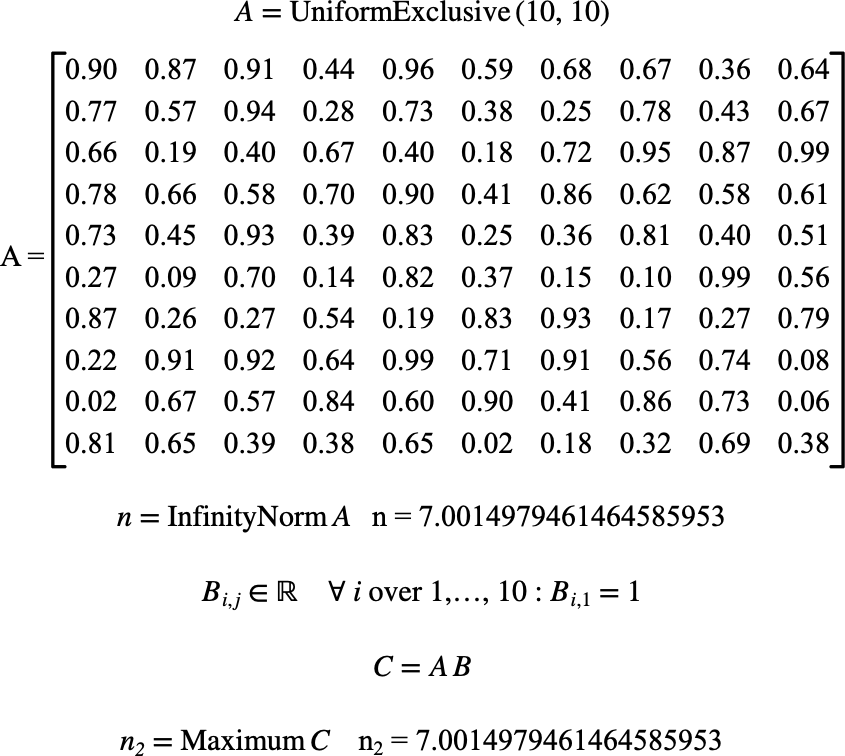\(\text{InfinityNorm}\)¶
You can use the \(\text{InfinityNorm}\) function to calculate the infinity-norm of a matrix.
You can use the \inorm backslash command to insert this function.
The following variants of this function are available:
\(\text{real } \text{InfinityNorm} \left ( \text{<matrix>} \right )\)
Where \(\text{<matrix>}\) is the matrix to calculate the infinity-norm of.
The infinity norm is calculated by:
\[\text{InfinityNorm} \left ( M \right ) =
\text{max} \left (
\sum_{c=1}^{ N _ c } \left \vert M _ { 1, c } \right \vert ,
\sum_{c=1}^{ N _ c } \left \vert M _ { 2, c } \right \vert ,
\ldots ,
\sum_{c=1}^{ N _ c } \left \vert M _ { N _ r, c } \right \vert
\right )\]
Where \(N _ r\) is the number of rows in matrix \(M\) and \(N _ c\) is the number of columns in matrhx \(M\).
Figure 158 shows the basic use of the \(\text{InfinityNorm}\) function.

Figure 158 Example Use Of The InfinityNorm Function¶
